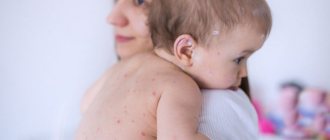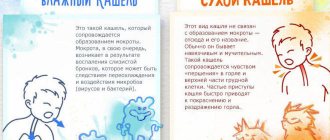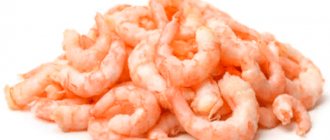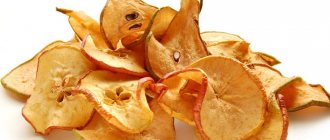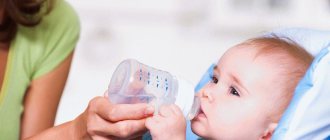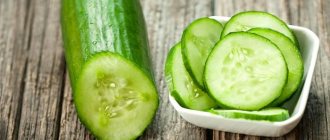Chickenpox - what is it?
Chickenpox is an infectious disease caused by the herpes virus.
You can read everything about this virus and how to cure it in a child in the article Chickenpox in children: symptoms and treatment.
The disease is transmitted by airborne droplets. Since the source of its spread is an infected person. A person is contagious two days before the first rash appears and for 5-8 days after the appearance of external signs of the disease.
The incubation period is 10 to 21 days (usually about two weeks). All this time, the virus lives in a person and does not manifest itself in any way. Having strengthened and spread throughout the body, the virus reveals itself with the first visual signs.
For example, the general condition of the patient resembles symptoms typical of ARVI:
- A sharp increase in temperature.
- Lack of appetite.
- General malaise.
- Headache.
- Weakness.
However, unlike a cold, chickenpox is accompanied by a characteristic rash throughout the body.
Many parents immediately independently diagnose their child and rush to treat the rash with brilliant green. But in fact, doing this is highly not recommended (unless the parents are competent specialists).
There are many diseases accompanied by skin rashes. And covering the rash with brilliant green does not allow the arriving doctor to conduct a full diagnosis.
Note: If you notice characteristic rashes in your child, the first thing you should do is call a doctor at home. Before the specialist arrives, do not take any independent actions (relieving symptoms of fever is acceptable).
The first rash is localized on the head and spreads from there. It usually does not appear on the palms and soles.
Initially, the rashes resemble marks from insect bites. However, soon the pimple is filled from the inside with a colorless liquid, which gradually becomes cloudy.
After about a day, the bubble bursts and the liquid flows out. The rashes dry out and a crust forms on them, which should fall off on its own over time. But since the rash is very itchy, children often scratch it, tearing off the dried crust with their nails. If this is allowed, the pimples will not go away without leaving a trace, and scars will remain in their place. In addition, there is a high probability of infection.
It is important to know that rashes do not only appear on the first day. Pimples do not change synchronously. Every day new inflammations appear, so in one area of the skin you can observe a rash of all stages of its development simultaneously. Each wave of rashes is accompanied by an increase in temperature.
The amount of inflammation for each child is individual. In most cases, about 250 pieces appear during the entire active stage. In a more severe form - up to 1500. But there are also known cases of infection where the total number of pimples did not reach 10.
Most of the patients are children from 6 to 12 years old. But the disease is easiest in the age group 1 - 7 years.
After complete recovery, 99% of the population develops lifelong immunity against the causative virus.
Hygiene for chickenpox
When mentioning hygiene, most people think of a set of water procedures aimed at keeping the body clean.
In fact, it is a whole science that includes many concepts that make up a person’s way of life.
Therefore, in this section we will consider everything that does not relate to water procedures. And the rest of the article will be devoted to a detailed analysis of the latter.
Requirements for the room where a sick child is located
The room should be clean and bright enough (but without direct sunlight). It is important to carry out wet cleaning at least once a day and ventilate the room every 2 hours. During ventilation, the child must be transferred to another room.
The temperature should be comfortable. For this reason, the optimal temperature is considered to be 20-23 degrees. But it all depends on the individual sensitivity of the baby. Well-known experts advise even lower temperatures so that the child does not overheat and does not sweat. Bed linen requires daily replacement.
Cloth
Underwear must be made of cotton. Synthetic fibers are contraindicated. Clothes should be changed daily or more often as they become dirty.
Being outside
The virus that causes chickenpox is very unstable to environmental influences. Temperature changes, light and ultraviolet rays can kill it. His only defense is his own fortress - the human body in which he lives. Outside the human body, it can exist for only 8-10 minutes.
However, as vulnerable as he is, he is also resilient. All its weaknesses are compensated by the speed with which it spreads. With air currents, during his life outside the human body, he is able to travel hundreds of meters, clinging to all living beings that do not have antibodies to him.
By the way, the latter are formed either in people who have already recovered from the disease, or are produced as a reaction to vaccination against this virus, or are transmitted as protection from the mother during pregnancy. However, the immunity obtained as a result of the latter option weakens every year and completely disappears by the age of 6.
That is why walking during infection is contraindicated.
You can go outside only when the child ceases to be a carrier of the virus - 5-8 days after the first rash appears.
Sleeping mode
Adequate sleep promotes a speedy recovery. However, if you feel constant itching, fever, pain and other accompanying symptoms, it is not possible to get a normal night’s sleep.
To relieve irritants, it is necessary to give the child sedatives and anti-allergenic drugs. An antipyretic will relieve high fever.
Note: The decision to prescribe medications to a child, as well as the dosage calculation, should come from the attending physician.
Diet
As with any other infectious disease, the baby is advised to drink plenty of fluids. This promotes the rapid removal of the virus from the body and metabolic breakdown products. The best options in this situation are drinking non-carbonated water, fruit drinks, compotes and green tea.
In order to avoid dry skin, it is necessary to review the child’s diet. The diet must contain dairy and fermented milk products, as well as a lot of plant foods.
The consumption of salted, peppered, fried, fatty and smoked foods is contraindicated.
Exercise stress
With a weakened immune system, additional stress on the body is excluded. Charging and hardening procedures had to be practiced before illness. And during the peak of the disease, the body's resources should be spent only on actions necessary to maintain life.
This ban is valid during the entire period of an intense viral attack and for another two weeks after complete recovery.
By the way, this is why pediatricians exempt children from physical education for 2 weeks after discharge.
Skin care
Chickenpox rashes are accompanied by unbearable itching. Combing them is strictly prohibited. This is fraught with infection and wound rotting.
However, this cannot be explained to every child.
Therefore, the first thing to do to prevent complications is to cut your child’s nails short and wash your hands regularly. If you do not perform this action, the baby will tear off the dried crust on the rash while scratching. And the dirt under his nails will get into the open wound and provoke the development of infection.
Very young children can wear anti-scratch gloves.
To prevent suppuration, pimples are treated with brilliant green. In addition, its use allows you to control the appearance of new rashes and the moment when they stop. These are the functions that brilliant green performs. It is important to understand that it does not have any medicinal effect.
Swimming during chickenpox
Just a few years ago, there was an opinion among pediatricians that bathing with chickenpox was categorically unacceptable. The reason for the ban was the argument that water softens dried inflammations and contributes to the further spread of the rash. However, today it has been proven that this opinion is wrong, and water procedures are even beneficial for the patient.
Rules for taking a bath for chickenpox:
- The water temperature should not be very hot. Optimal - 36-38 degrees.
- The duration of the bath is no more than 5-10 minutes.
- If washing is carried out in the shower, the time limit is 1-3 minutes. Frequency of administration: 4-6 times a day. The pressure should be weak.
- Do not use shampoos, shower gels, bubble baths or other similar products. When chemicals come into contact with the lesion, the itching intensifies. In addition, in such a situation a severe allergic reaction may occur. The only possible solution is tar soap.
- For example, it is advisable to add a solution of potassium permanganate or some natural antiseptic (for example, chamomile or calendula) to the water.
- It is unacceptable to use a washcloth or otherwise rub inflamed areas of the body. Such exposure contributes to even deeper damage to the skin.
- In addition, if the dry crust is peeled off during friction, this is fraught with consequences in the form of scars.
- For the reason described above, you should not dry yourself after taking a bath. It is only permissible to gently blot the baby’s body with terry material.
- The towel must always be freshly washed.
- After the procedure, it is necessary to re-treat the inflammation with brilliant green or another product used during illness and change the baby into clean cotton underwear.
When can you wash yourself if you have chickenpox?
You can—and even need—to wash after the acute period of the disease has subsided. In a normal situation, this occurs 3-5 days after the first rash appears.
When is swimming prohibited?
Water procedures are contraindicated in the following cases:
- Having a high body temperature.
- Hot water stimulates an even greater fever in the child.
- General poor health.
- Weakened immunity.
- The presence of suppuration, ulcers, open wounds.
What can you add to your bathing water?
As already noted, bathing with chickenpox should be accompanied by the addition of one of the healing agents to the bath.
The following have proven themselves to be the best:
Potassium permanganate.
This is a disinfectant anti-inflammatory agent, sold in the form of a powder of small crystals.
When using this drug, it is important not to overdo it with the amount (it can cause burns). It is best to dilute the solution in a separate container and gradually add it to the bath. The color of the water after stirring should be pale pink. Not brighter.
The ideal ratio would be 5 crystals of potassium permanganate per 200 ml of water.
Soda.
This product effectively relieves itching and guarantees a lasting effect lasting up to 6 hours. It is advisable to take such baths at night. To obtain an effective concentration, one tablespoon of soda is enough.
Note: The duration of the child’s stay in this solution should not exceed 10 minutes.
Oak bark.
Promotes the fastest healing of blisters.
To get the result, you need to pour two teaspoons of ground bark with a glass of boiling water and wait at least 1 hour. Then pour the infusion into the bath.
Carefully! The drug is a strong allergen. Before use, make sure that your child does not have a negative reaction to oak bark.
Chamomile.
This flower shares 1st place with potassium permanganate in terms of the effectiveness of its use in chickenpox.
As in the previous case, it is brewed in a separate container with boiling water. The infusion time should be three hours. Proportions - 2 tablespoons per liter jar.
Celandine.
It fully lives up to its name, helping to disinfect and dry out abscesses.
In the fight against chickenpox, it is advisable to use a fresh plant. A handful of herbs should be finely chopped and boiled for 20 minutes.
Before adding liquid to the baby bath, it must be filtered.
As in the case of soda, there is a limit on the duration of contact of the herbal decoction with the baby’s body (no more than 10 minutes).
In what cases can a child be bathed?
Back in the early and mid-20th century, doctors did not have sufficient information to accurately determine the rules by which a child could be bathed with chickenpox without aggravating the situation. Now all the pathological processes occurring in the body during infection have been studied in detail.
Doctors say that in most cases, bathing in a bath with chickenpox is even beneficial, as this will avoid certain complications.
As you know, the period of chickenpox rash is no more than 7-8 days; if you do not wash your child during this entire time, his skin will be a favorable environment for the proliferation of harmful microorganisms.
These abnormalities will first manifest themselves in the form of itching; the child begins to scratch the wounds and introduce infection inside. This is the main reason for the manifestation of secondary purulent diseases after chickenpox.
Washing your hair for chickenpox
Hair can be washed from the first day the rash appears. However, this must be done extremely carefully. The fact is that if water that has come into contact with inflammation gets into the eyes, they will become instantly infected. Such a complication, at best, can result in lifelong scarring on the eyes, and at worst, loss of vision.
Hair washing should be carried out according to the following rules:
- The use of shampoos is strictly unacceptable. Hair is washed either with clean water or natural antiseptics. You can use a weak solution of potassium permanganate.
- Water should not get into the eyes and around the eye area.
- The head should be washed separately from the body.
- Do not rub with a towel. You can just throw it on top and blot away the moisture.
- After finishing washing, you need to re-treat the damage with an antiseptic.
Is it permissible to wash your hair?
Washing your hair when you are sick is no less important than bathing. After all, the sebaceous glands on the scalp work intensively during illness. This means that the chances of pathogenic microorganisms increase significantly.
In addition, it is not so easy to see rashes under the hair. Their integrity may be compromised and the wound will begin to fester.
You should wash your hair with warm water without shampoo. To avoid bursting bubbles, do not make sudden movements, rub or squeeze your hair.
After cleansing, it is better to rinse your hair with a weak solution of manganese or soda. Next, pat your head dry with a towel. It is allowed to dry your hair with a hairdryer without overheating the scalp.
Why is bathing beneficial for chickenpox?
There are several reasons:
- Water itself perfectly relieves itching, and if you add some healing agent to it, the healing process will significantly speed up.
- After water procedures, the child will sleep well. He will not be distracted by severe itching.
- Washing the wounds prevents infection from entering them.
- Sweat and pollution clog pores and prevent the skin from breathing.
- An unwashed body is the cause of additional discomfort for its owner.
- Dirt on the skin provokes the development of other infections.
Bath or shower?
If you follow the described rules for carrying out procedures, there is no fundamental difference. However, many pediatricians believe that the very first water procedures are best performed using a shower. And from 5-8 days you can already replace them with a bath.
Swimming after chickenpox
Full washing (using accompanying paraphernalia and in hot water) is possible at least 5 days after the disappearance of the last visual signs of the disease. Usually this occurs no earlier than the twentieth day from the onset of the disease.
Some pediatricians allow it from the first day of recovery. But the fact is that the disease can go into a latent phase of its course and the use of irritants can provoke its exacerbation.
Hygiene procedures after recovery
On the fifth day, the alarming symptoms subside and you can switch to the usual regime of water procedures. This is due to the peculiarity of the course of the disease, which can have a latent period and manifest itself as new pimples.
The acute stage of chickenpox can pass, but the spots will remain for some time, causing a lot of inconvenience. It will be very uncomfortable for an adult to go to work with such rashes. You can get rid of them using the following methods:
- using washing with laundry soap;
- rubbing the skin with a mixture of fresh lemon juice and alcohol;
- applying a rich cream to problem areas of the skin;
- using nail polish remover (use of this product in children is contraindicated);
- using 30% hydrogen peroxide.
All liquid products are applied using a cotton swab. A small amount of liquid is applied to it and the unattractive element is wiped. Typically, several treatments are required to completely remove stains. It is necessary to remove stains from brilliant green before taking a bath, and not after it.
Is it possible to go to the bathhouse, pool, or seaside with chickenpox?
Bath
In the recommendations for the implementation of water procedures, a categorical ban on the use of hot water has already been noted. The same applies to exposure to steam. Steaming the body of a sick baby is strictly contraindicated!
Pool
Here it is important to take into account the social component of the issue.
If we are talking about a public city swimming pool, the answer is clearly negative.
There are several reasons:
- The disease is transmitted by airborne droplets with tremendous speed. People around you who have not had chickenpox will become infected with a 90-100% probability.
- Sharp negativity from other pool visitors regarding the appearance of a “spotted” child.
- The water temperature in public pools is maintained from 24 to 30 degrees (depending on the intended purpose and associated conditions). We found out that water procedures should be carried out at a comfortable temperature of 36 to 38 degrees.
- To disinfect pool water, chloramine and/or hydrochloric acid solution is added. However, if the disinfecting properties of chemicals in the case of chickenpox would only be beneficial, then their alkaline and acidic components, when exposed to open wounds, lead to severe burns and a significant slowdown in the healing process. And in exceptional cases - with an increased concentration of the active substance - this can even provoke the death of the patient!
- If we are talking about a personal pool with the possibility of individual temperature settings and full control over the composition of the liquid filling its bowl, you can and should swim.
The only thing is that in addition to taking the measures described above, parents must maintain the cleanliness of the pool bowl.
Sea
When answering the question about the possibility of swimming in sea water, you should rely on the arguments described in the topic above.
A categorical ban will be:
- for swimming in crowded places (this does not mean an area with a large number of vacationers, but, in principle, any coastal area where there are strangers);
- bathing during the acute phase of the disease;
- being in water with festering or open wounds;
- for swimming with a body temperature above 36.9 degrees and/or in insufficiently warm sea water.
When should you not bathe your child?
In order not to aggravate the course of the disease, every parent should know in what cases a child should not be bathed with chickenpox. On the first day of infection, the baby will most likely develop a high fever. On this day he is strictly forbidden to take a bath.
Some children with weakened immune systems, as well as those with chickenpox occurring simultaneously with other diseases, may suffer from elevated temperature throughout the entire period. In this case, you cannot swim. To partially solve the problem, the child can be wiped with a soft, wet towel or napkins.
Important! If it is forbidden to bathe the child completely, it should be done partially. We are talking about the genitals. Every day parents should wash their child. In this case, you can use chamomile decoction or other antiseptic agents of natural origin.
If you do not wash the genital areas, a rash on the mucous membrane will provoke the development of inflammatory processes. As a result, this will worsen the disease and require additional treatment.
Dr. Komarovsky about chickenpox
Advice from the most popular pediatrician in Russia:
- Directed treatment should be used only for severe disease in newborns and children over 12 years of age. In other cases, it is better to simply use medications to relieve the symptoms of the disease.
- If a child’s temperature rises sharply, it must be brought down with antipyretic drugs.
- Taking aspirin is contraindicated. It has side effects on the liver.
- Itching is relieved with antihistamines.
- The child should consume plenty of fluids.
- Swimming with chickenpox should be done in cool water.
- You need to keep your child's hands clean. It is better to cut your nails short. Children should wear special gloves.
- Linen must be changed daily.
- Using brilliant green has no effect. The rashes will dry out without it. The only benefit from its use is that you can notice when the rashes stop and from this moment you can count 5 days of the child’s mandatory stay in isolation.
- It is better to postpone visiting kindergarten for 3 weeks after final recovery.
- The best prevention of chickenpox is timely vaccination against the causative agent of the virus. The effect of vaccination lasts 10 years.
